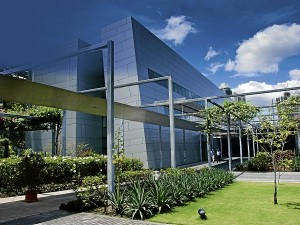British Embassy lays ‘green’ path for sustainable growth

GREEN buildings such as the British Embassy’s edifice reduce the demand for power plants since they need less energy than other structures.
Embassies located in the different parts of the globe are primarily tasked to represent, promote and embody their respective countries’ interests—whether economic or political—as well as their values within a host country.
It is no wonder then that most of us see embassies exactly only as that: a space where we transact, do business or get visas from the foreign countries they represent.
But the British Embassy Manila goes beyond such functions and common perceptions.
The actual physical structure that houses British Embassy Manila inside Megaworld Corp.’s McKinley Hill property in Taguig City embodies the United Kingdom’s commitment to reduce its carbon emissions and become “the greenest government ever.”
The UK government steadfastly believes that shifting to “low carbon economy” is the only option for a sustainable growth path.
In an interview with Inquirer Property, British Embassy climate change attaché Roslyn Arayata said the initial plan was really to go green, that’s why the UK government decided in 2006 to tap international architect firm Denton Corker Marshall to design a new sustainable British Embassy for the Philippines—one that would combine “innovative architecture with environmentally sensitive design.”
Currently, the British Embassy Manila’s status as a model of green construction is secured by the “excellent” rating it received from the British Research Establishment Energy Assessment Method (BREEAM), one of the leading green building rating systems in the world.
First in the world
“The embassy in the Philippines is, in fact, the first British embassy in the world to be granted an excellent BREEAM rating,” Arayata related.
BREEAM is a standard for the environmental assessment of buildings and was first developed in the United Kingdom in 1990. It has since become the most widely used green building rating system in the world, setting the benchmark for energy efficiency and sustainable buildings.
Asked if all British embassies follow the same standard, Arayata said: “Not all embassies have the same kind of standard but it is being encouraged to go green as much as they can.”
“But I know different posts are already considering that pathway of making it all green. Other embassies around the world have their own green initiatives customized to where their posts are located,” she added.
Prior to moving to Taguig City, the British Embassy Manila had previously been in various other locations within the metro. Its current building opened for business in Oct. 20, 2008.
Energy sustainability
Proudly a green structure, the British Embassy Manila paid keen attention to energy and water usage, as well as long-term energy sustainability measures, according to Arayata.
For instance, the building has begun using the more energy-efficient LED lights compared to the compact fluorescent lamp (CFL) lights.
The British Foreign and Commonwealth Office (FCO) also provided guidelines that will enable the embassy to reduce energy emissions by switching off lights, printers, faxes, photocopiers and monitors at the end of the day; maintain generators, boilers, air conditioners and vehicles regularly; install timers and temperature controls on heating and cooling equipment where possible.
Arayata also pointed out that upon entry to the building, one would immediately notice the extensive use of natural lights, given the use of large windows.
“We maximize the use of natural light. Even in our pantry area, we use natural light. We have also installed energy-efficient and motion-sensor lighting to further conserve energy,” she explained.
As part of its green initiative, the British Embassy building also installed solar panels for water heating, has high ceilings for air circulation, water irrigation for plants and recycled water for toilets.
The British Embassy Manila highly encourages its employees to do their own little share, which could range from mundane activities to something as big as a lifestyle change.
Lifestyle change
For example, employees are encouraged to reduce travel emissions through use of public transport, share vehicles, travel by train rather than plane, minimize number of connecting flights, and use well-maintained and greener vehicles.
To avoid frequent travels, the British Embassy further encourages employees to maximize the use of tele- and videoconferencing facilities.
Add to these, employees are likewise instructed to use resources more carefully by printing only what they need, and at the same time, by asking them to set up clearly marked recycling points in the office where there are facilities that can recycle cans, glass, plastics, paper, card, ink cartridges, batteries, telephones, CDs, tetrapaks, old electrical and electronic equipment and tires.
Such practices, according to Arayata, when properly put in place would result to an improved resource management practice.
“In the case of the British Embassy Manila, the technical work supervisor has actually reported energy savings since the incorporation of energy-efficient measures, so there is actual economic benefit to it,” Arayata concluded.
